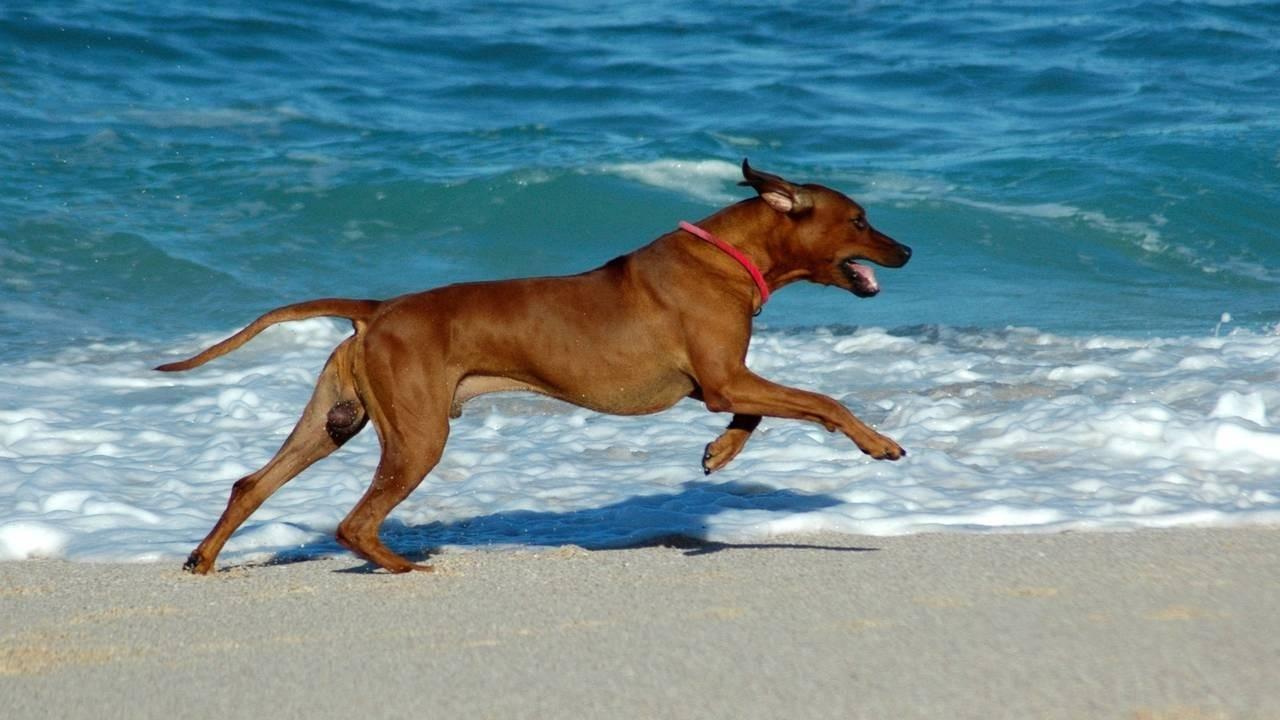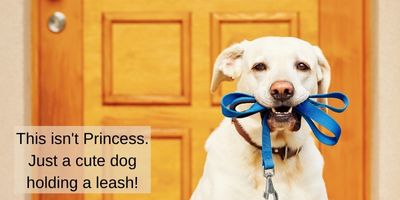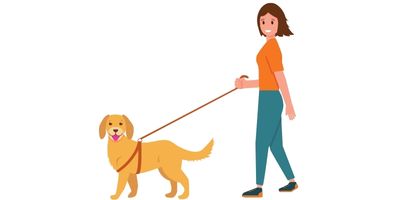Senior Dog with Spinal Arthritis Walks Easily Again
Aug 15, 2019
Have you ever looked at your aging dog, with her stiff back and arthritic joints, and wished you could help her move easily again?
But you assume that there’s nothing else you can do. You’re already providing your dog with regular vet exams, a high-quality diet, joint supplements and lots of love and attention. The increasing stiffness and fatigue is just part of getting older, right?
Whether your dog is already a senior or still an active pup, I’m betting that you would like her to be as active and happy for as long as possible. So I invite you to read how an arthritic senior dog – and her person – regained the spring in their steps!
The black and tan dog looked like an adorable cross between a Beagle and a German shepherd. Her name was Princess, and she walked with mincing steps into my office, her lower back rounded as if in pain.
Princess was accompanied by Janet, a tall, blonde woman in her late 40’s. Janet told me how each morning for eleven years, she would wake to find Princess standing next to her bed, leash in mouth, begging for a walk. Janet always complied.
But about a year ago, Princess started to tire on walks, and they would return home early. Eventually, the twelve-year-old dog stopped asking to go for walks, even looking away if Janet suggested one. Sadly, Princess was now only going outside to relieve herself or to lie in the sun.

This dog has a significant rounded or “roached” back. Even a less rounded back may indicate that a dog has spinal problems. Consult a veterinarian if you notice changes in your dog’s back.
Janet thought that her dog’s rounded back was a harmless aspect of aging
Janet mentioned that Princess’ back had begun to get a rounded appearance a couple of years ago. Since it was a gradual change and Princess didn’t appear to be in any pain at that time, Janet wrote it off as a harmless aspect of aging.
But when Princess’ movement and energy level diminished, Janet took her to the veterinarian. The vet diagnosed spinal arthritis and prescribed a strong anti-inflammatory, pain-relieving medication. Janet disliked giving her dog such a strong pharmaceutical, but decided to try it to see if it would significantly improve Princess’ quality of life. While the black and tan dog walked a little easier when on the medicine, her rounded back and unwillingness to go on walks remained.
After our conversation, Janet asked Princess to lie down on the comfortable mat in the center of my office. After the dog settled, I used soft open hands to gently lift the muscles along Princess’ back. My movements were very slow and light.
Being attentive to the dog’s breathing ensured that she remained comfortable
As I lifted each small area of muscle, Princess’ breathing became slower and deeper. Since learning cannot occur in a state of anxiety, it was important for me to keep the dog feeling safe and comfortable. Princess’ relaxed breathing meant that she wasn’t anxious. We were off to a good start.
Gentle back lifts can help improve a dog’s body awareness

Mary doing Back Lifts with an 18-year-old rat terrier-Chihuahua mix named Nicky.
In addition to helping release tense back muscles, the gentle lifting was also enhancing the dog’s awareness of her entire back. Very often when we have pain, we tighten the muscles around the painful area to minimize movement and reduce discomfort. These parts then begin to be lost from our awareness. This leads to fragmentation of movement, with some body parts working harder than the “tuned out” parts. The hard-working parts may then sustain an overuse injury or develop arthritis.
I helped the senior dog feel that walking could be a pleasure, not a chore
It’s also very tiring to move in a fragmented way. The way Princess currently walked was that her legs did all the work and her back hardly moved at all. Consequently, her steps were small and mincing. My hands reminded the senior dog that she could involve more parts of herself when she walked, which would decrease her effort and strain. Princess could once again feel that walking was not a chore, but a pleasure. Just like it was when she was a younger dog.

My index finger points to the top of my dog Ruby’s sternum.
With the shepherd mix still lying on her side, I touched her sternum, the bone that runs down the center of the chest. I very delicately pressed down, bringing her chest slightly closer to her pelvis. This gentle support can relieve strain in the lower back, and I put my other hand on the dog’s lumbar area to feel the muscles softening there.
I then brought the dog’s pelvis and hind legs a little further underneath her body as I slightly exaggerated the rounding of her spine. Keeping the lower back rounded had become a habit for Princess. When my hands supported this rounded posture for her, it allowed her own muscles to release their chronic, tiring contractions. Princess breathed an audible sigh of relief.
Amazingly, the dog’s back became straighter
After supporting Princess in various ways for about 20 or 30 minutes, I slowly released my support. Amazingly, the dog’s back was straighter. How did this happen? After all, I didn’t manipulate the spine or attempt to straighten the dog’s back. The answer lies in observing the two photos of the running dog you see below.

Dog flexing (rounding) his spine
In the first photo, the Rhodesian ridgeback’s spine is flexed (rounded), allowing him to draw his legs underneath his body. Looking at the underside of the dog, notice how close his rib cage is to his pelvis. The ridgeback’s flexor muscles are at work here; allowing him to powerfully coil like a spring.

Dog extending his spine
In the second photo, the dog’s spine and limbs are extended (straightened). There is a greater distance between the underside of the dog’s rib cage and pelvis. At this point in his stride, the ridgeback’s flexor muscles relax to allow his back muscles (extensors) to uncoil his spine.
There is an exquisite harmony at work when a healthy dog runs, with the muscles that round the back and the muscles that straighten the back politely taking turns. When one set of muscles is working, the other should be relaxed.
When one set of muscles doesn’t completely release, there is greater wear and tear on joints and muscles
But problems can develop when one set of muscles doesn’t completely release. If either the extensor or flexor muscles remain taut, it makes it difficult for the dog to fully coil and uncoil his spine. Fluidity of movement is lost and there is greater wear and tear on joints and muscles. Over time, this can decrease the dog’s strength, impair her balance and, ultimately, lead to degeneration of the dog’s spine. Spinal arthritis and/or intervertebral disc disease (IVDD) may result.
And that’s what happened with Princess. The black and tan dog habitually tensed her flexor muscles, which led to her rounded posture and most likely contributed to her spinal arthritis.
But when my hands brought Princess’ rib cage a little bit closer to her pelvis, I was supporting her overworked flexor muscles, which helped them release. This interrupted the vicious cycle of muscular tension and relieved the strain in her back.
Once the aging dog experienced that it was possible to feel differently, she could move differently.
Breaking out of the vicious cycle was a critically important step. Because once the dog experienced that it was possible to feel differently, she could move differently. The novelty of these pleasurable movements stimulate the creation of new neural connections, helping the dog adopt healthier movement options.
After I felt the improvement in Princess’ back, I asked her to stand up, and I gently worked with her sternum and ribs. I wanted to help the dog feel how standing and walking could now be easier. The dog’s back was noticeably straighter and she taking longer steps when she left my office. By using her body in this new, more efficient way, Princess wouldn’t tire as quickly.
Janet called me the next day to happily report that Princess woke her up the next morning, leash in mouth! Janet was thrilled to be able to take her pet on a short walk without the dog tiring. We laughed as Janet said, “Princess got her groove back!”

I gave Princess a few more sessions to support her progress. In the subsequent sessions, I taught the black and tan dog to extend her spine while her hind legs moved back, a motion that is important in walking.
I also taught Janet some simple hands-on movements to help keep her beloved canine companion feeling strong and vital. And I led Janet through Feldenkrais® Awareness Through Movement® lessons that relieved her own back pain while improving her posture and walking. Happily, both Janet and Princess seemed younger when I last saw them!

Debono Movessm can enhance your pet’s well-being at any life stage
Princess’ story illustrates how Debono Moves can enhance the quality of life of a senior dog who was losing the ability to walk. But you don’t have to wait until your pet’s movement is compromised. Debono Moves can also help animal athletes optimize their performance and reduce the risk of injury.
Get our FREE 3-video canine masterclass. Click here!
Want to jump right in and begin helping your dog (and yourself) feel younger? Get a digital copy of my award-winning, bestselling book, Grow Young with Your Dog right here.
If you prefer a softcover copy, it's also available on Amazon. Thank you!
Please note: This information is for general educational purposes only and is not intended to replace veterinary advice. Mary Debono, Gary Waskowsky and SENSE Method, Inc. disclaim all liability in connection with the use of this information. Please consult a veterinarian if you have any concerns about your dog’s health or soundness.


